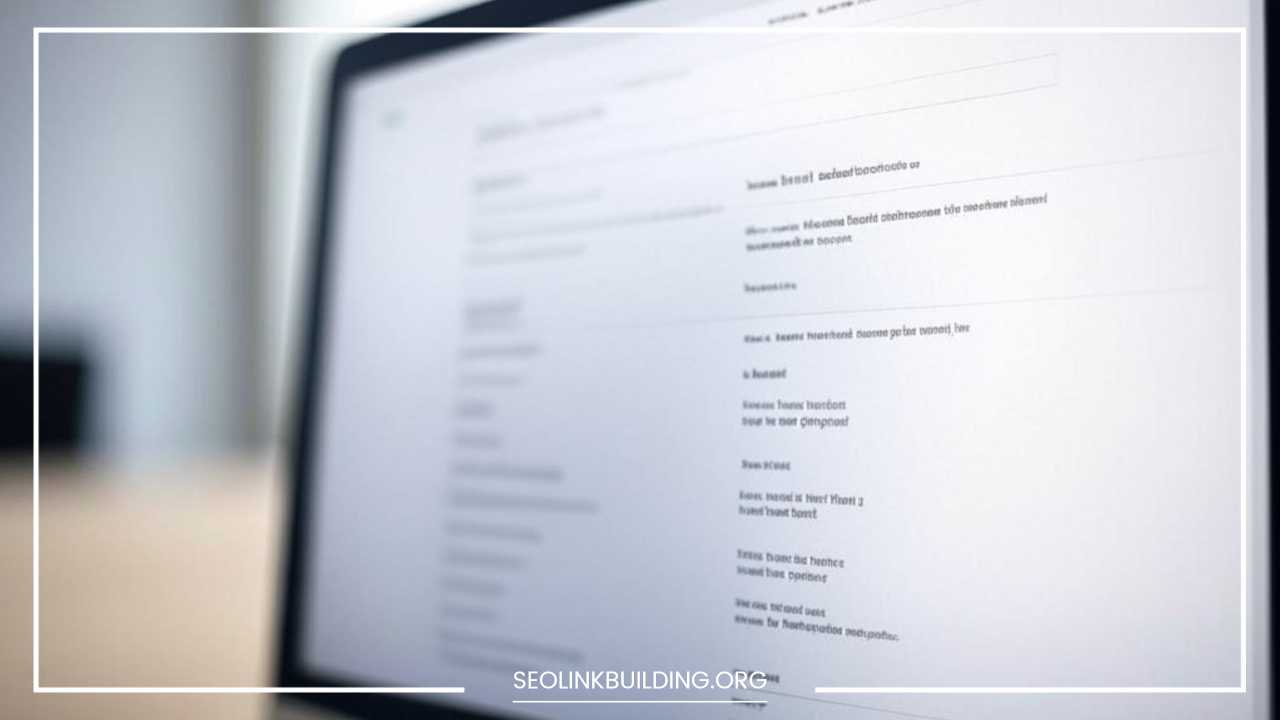What is Email Outreach

Email Outreach
What is Email Outreach?
Email outreach is the practice of reaching out to individuals or businesses via email with the aim of building relationships, generating leads, promoting your brand, or achieving other marketing and sales objectives.
It is a powerful tactic employed by businesses and professionals to initiate contact with potential clients, partners, influencers, or media outlets.
While email outreach can sometimes be misunderstood as just cold emailing, it encompasses a wide range of strategies, from cold outreach to ongoing relationship-building campaigns.
Email outreach can be used for:
- Building Relationships: Reaching out to influencers, industry leaders, or journalists to build lasting connections.
- Generating Leads: Contacting prospects or customers to inform them about your product or service and move them down the sales funnel.
- Securing Partnerships: Approaching other businesses or individuals for potential collaborations, joint ventures, or partnerships.
- Brand Awareness: Introducing your brand to a larger audience by pitching it to relevant contacts or influencers.
- Link Building: Reaching out to websites or blogs for backlinks to improve SEO.
While email outreach can be a cost-effective marketing strategy, it also requires careful planning, personalization, and tracking to ensure success.
Key Components of an Effective Email Outreach Strategy
Executing a successful email outreach campaign involves more than just sending a series of emails. It requires a well-thought-out strategy with specific goals, tailored messages, and a process for measuring success. Below are the critical components that contribute to an effective outreach campaign.
1. Define Clear Objectives
Every email outreach campaign must start with clear, measurable objectives. These goals will guide the direction of the campaign and help you determine the key performance indicators (KPIs) that you’ll track. Here are a few examples of outreach objectives:
- Lead Generation: You may want to generate a certain number of leads or sales.
- Brand Awareness: You might aim to increase your brand visibility in a specific market or vertical.
- Partnership Acquisition: You may want to build strategic partnerships or collaborations.
- Media Coverage: Pitching your company or product to journalists for articles, blog posts, or interviews.
For instance, if your goal is lead generation, your outreach campaign might focus on attracting potential customers for a free trial or consultation.
If your goal is building media relationships, the outreach will be more focused on pitching a compelling story to journalists and bloggers.
By defining your goals, you can tailor your message and evaluate the success of your campaign with precision.
2. Identify Your Target Audience
Understanding who you are trying to reach is one of the most crucial aspects of a successful email outreach campaign.
Without a well-defined target audience, your messages may fail to resonate, or worse, end up being seen as irrelevant or intrusive.
When identifying your target audience, consider the following:
- Demographics: Age, gender, income level, education, etc. (for B2C outreach).
- Firmographics: Company size, industry, job titles, etc. (for B2B outreach).
- Interests and Pain Points: What are their goals, challenges, or needs that your product or service can address?
- Behavioral Data: How do they engage with content or emails? What are their preferred communication channels?
For example, if you are a SaaS company offering a project management tool, your target audience might include project managers, team leads, or HR directors in mid-sized businesses. These individuals likely face the challenge of streamlining team collaboration and managing complex projects.
Once you define your target audience, it’s time to build a targeted email list that is in alignment with their needs and preferences. Tools like LinkedIn, Apollo, or Crunchbase can help you find individuals or businesses that fit your target profile.
3. Build an Email List
Having a clean, updated, and highly-targeted email list is essential for email outreach. A high-quality list ensures that your emails are going to the right people who have the potential to engage with your content or offer.
Here are a few methods for building your email list:
- Research on LinkedIn and Other Professional Platforms: LinkedIn Sales Navigator allows you to filter contacts by job title, industry, and location, making it easier to find decision-makers.
- Use Email Finder Tools: Tools like Hunter.io, Voila Norbert, and Snov.io allow you to find verified email addresses for potential leads.
- Leverage Industry Databases: Services like ZoomInfo, Clearbit, and Crunchbase provide in-depth data on companies and decision-makers.
- Create Content That Attracts Contacts: Offer valuable content (e.g., whitepapers, case studies, eBooks) in exchange for email sign-ups.
- Network and Ask for Referrals: Ask existing contacts to refer you to others who might benefit from your outreach.
Keep in mind that email list hygiene is crucial to prevent being marked as spam. Regularly update your list by removing invalid email addresses, and ensure that your outreach respects the privacy and preferences of recipients.
4. Craft Compelling Email Content
A compelling email can be the difference between success and failure in your outreach efforts. A well-written email should grab the recipient’s attention and motivate them to take action.
Here are several key principles to follow when crafting email content:
Personalization
- Use the recipient’s name: Personalize your emails with the recipient’s name, which can increase engagement rates.
- Reference a shared connection: If possible, mention a mutual contact or connection to build rapport and establish credibility.
- Tailor your message to their interests: Show that you’ve done your homework by referencing their company, recent work, or industry trends that may resonate with them.
Clarity and Brevity
- Keep it concise: Your email should be short, clear, and to the point. Busy professionals don’t have time to read long emails.
- Focus on the benefit to them: Clearly articulate how your product, service, or proposal will benefit the recipient. Highlight the value you’re offering rather than just talking about what you do.
- Avoid jargon: Use simple, straightforward language that’s easy to understand.
Strong Call to Action (CTA)
- Your CTA should be clear, actionable, and easy to follow. Whether you’re asking the recipient to schedule a meeting, sign up for a demo, or click on a link to learn more, ensure the action you’re requesting is specific and easy to complete.
For example, a CTA like “Click here to schedule a call” is much more actionable than “Let me know if you’re interested.”
5. Choose the Right Tools
There are many tools available to streamline the process of email outreach, from email marketing platforms to CRM systems. Choosing the right set of tools for your campaign can significantly improve efficiency and effectiveness.
Email Marketing Platforms
These tools help you manage your outreach campaigns, automate emails, track engagement, and segment your audience. Some popular options include:
- Mailchimp: A widely-used email marketing platform with easy-to-use templates, automation workflows, and advanced analytics.
- HubSpot: An all-in-one CRM and email marketing tool that also includes features like automation, landing pages, and lead tracking.
- Sendinblue: Provides email marketing, SMS campaigns, and marketing automation in a single platform.
CRM Systems
These systems allow you to track interactions, follow up with leads, and manage relationships at scale. Some popular CRM tools include:
- Salesforce: A robust CRM platform with powerful automation, reporting, and customer data management.
- Pipedrive: A sales-focused CRM designed to manage prospects and opportunities effectively.
- Zoho CRM: A customizable CRM with lead management, workflow automation, and analytics.
Email Outreach Tools
Dedicated email outreach platforms specialize in automating and optimizing cold email outreach. Some well-known options are:
- Lemlist: An outreach platform that allows for highly personalized cold email campaigns with features like automated follow-ups and A/B testing.
- Woodpecker: A cold email tool designed for small businesses that automates personalized outreach and follow-ups.
- Outreach.io: A sales engagement platform that provides advanced email sequencing, multi-channel outreach, and analytics.
Prospecting and Data Verification Tools
These tools help you find verified contacts for your outreach campaigns. They include:
- Hunter.io: An email finder tool that allows you to find verified email addresses and conduct domain searches.
- LinkedIn Sales Navigator: A LinkedIn tool that lets you find leads, track accounts, and send personalized connection requests.
- Snov.io: A prospecting tool that helps you find leads and their email addresses across various platforms.
6. Track and Analyze Results
To improve the performance of your email outreach, it’s essential to track key metrics and analyze the results. Here’s what to monitor:
- Open Rate: The percentage of recipients who open your email. A low open rate could indicate that your subject line or sending time needs adjustment.
- Click-Through Rate (CTR): The percentage of recipients who click on links or buttons within your email. This indicates how compelling and relevant your email content is.
- Response Rate: The percentage of recipients who reply to your email. A low response rate suggests that your messaging might not resonate.
- Conversion Rate: The percentage of recipients who take the desired action (e.g., schedule a call, make a purchase).
By analyzing these metrics, you can make data-driven decisions to refine your outreach strategy. For instance, if you notice a higher response rate when you personalize the email with specific references to the recipient’s company, you may decide to implement that tactic more frequently.
How to Write an Outreach Email
Let’s break down the process of writing an effective outreach email using a step-by-step approach:
1. Subject Line
The subject line is the first thing the recipient sees, so it must grab their attention and compel them to open the email. Some tips include:
- Personalization: Including the recipient’s name or company can increase open rates.
- Clarity: Be clear about the value of your email.
- Brevity: Keep the subject line short and to the point (ideally under 50 characters).
2. Opening Line
Start with a friendly greeting and a brief introduction of who you are. You can also immediately establish relevance by mentioning something specific about the recipient, such as their company or work.
3. Body of the Email
Here, you should highlight the value you’re offering and why the recipient should care. Avoid overwhelming them with too much information—focus on one main benefit or value proposition.
4. Call to Action
Clearly state the next step you’d like the recipient to take, whether it’s scheduling a call, downloading a resource, or visiting your website.
5. Closing
Thank them for their time and consideration, and use a professional sign-off like “Best regards” or “Sincerely.”
6. Signature
Include your full name, position, company, and a way to contact you. A professional email signature can also include links to your website, LinkedIn, or other social profiles.
Final Thoughts
Email outreach is an indispensable tool for building relationships, generating leads, and achieving business objectives.
However, the success of an outreach campaign hinges on thoughtful strategy, targeted messaging, and effective tracking.
By clearly defining your goals, personalizing your approach, and leveraging the right tools, you can improve the effectiveness of your outreach efforts and increase your chances of success.
Remember, successful email outreach is not just about sending emails—it’s about building relationships, adding value, and continuously refining your approach to meet your audience’s needs.
By following the best practices outlined here, you can ensure your email outreach campaigns are both impactful and sustainable.













